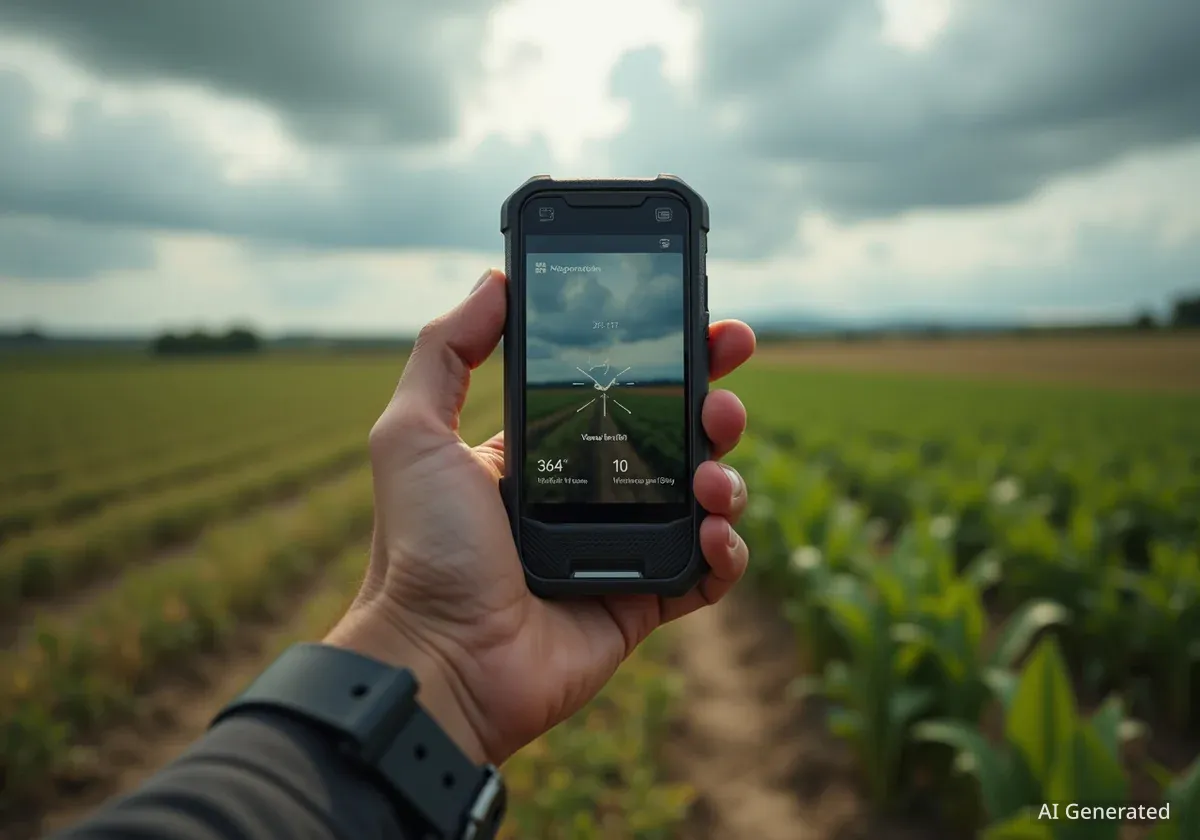Artificial intelligence is transforming weather forecasting, providing highly accurate and low-cost predictions that could significantly benefit farmers worldwide, particularly in developing nations. These new AI-driven models operate at a fraction of the cost of traditional systems, making advanced climate data accessible to regions previously limited by expensive technology.
For agricultural communities facing increased risks from climate change, access to reliable forecasts is critical. The ability to predict rainfall patterns, dry spells, and optimal planting times can improve crop yields, reduce costs, and enhance food security for millions.
Key Takeaways
- New AI models provide weather forecasts orders of magnitude faster and cheaper than traditional physics-based systems.
- This technology makes accurate, localized predictions accessible to low- and middle-income countries for the first time.
- Improved forecasts help farmers make better decisions about planting, irrigation, and fertilizer use, reducing climate-related risks.
- Models like GraphCast and Pangu-Weather can run on a single GPU, eliminating the need for expensive supercomputers.
- Successful implementation requires tailoring the AI forecasts to local agricultural needs and ensuring effective distribution to farmers.
The High Cost of Traditional Weather Prediction
For decades, weather forecasting has relied on complex, physics-based models. These systems simulate the Earth's atmosphere to predict future conditions. While powerful, they have significant drawbacks that limit their global reach.
The primary barrier is cost. Running these simulations requires immense computational power, typically housed in supercomputers. Maintaining such infrastructure is prohibitively expensive for most national meteorological agencies in developing countries.
A Focus on Temperate Climates
Traditional forecasting models have historically been developed and optimized by and for northern countries. As a result, they tend to perform better in temperate, high-income regions while paying less attention to the tropics, where a large number of low- and middle-income nations are located.
This technological and financial gap has left farmers in many parts of the world without access to the reliable, timely weather information needed to manage their crops effectively. A delayed monsoon in South Asia, for example, can force a rice farmer to replant or switch crops, leading to lost time and income.
AI Models Revolutionize Forecasting Technology
A major shift began around 2022 with the development of deep learning models for weather prediction. Researchers from universities and private industry created AI systems capable of generating accurate forecasts up to two weeks in advance for any location on the globe.
These models, including Pangu-Weather and GraphCast, have demonstrated performance that matches or even exceeds leading physics-based systems for certain predictions, such as temperature. Their most significant advantage, however, is their efficiency.
From Supercomputers to Laptops
While a traditional forecast cycle can require thousands of CPU hours on a supercomputer, a modern AI model can produce a forecast in minutes using a single GPU. Once trained, these models can run on a standard laptop or desktop computer, dramatically lowering the barrier to entry.
AI models achieve this speed by learning relationships from vast amounts of historical climate data. The intensive part is the initial training process. After that, the trained model can generate new forecasts without performing complex physical calculations for every variable. This shortcut makes the process thousands of times faster and more energy-efficient.
"The result of all these advances: high-resolution forecasts globally within seconds on a single laptop or desktop computer."
Translating Technology into Actionable Advice
While the technical capabilities of AI weather models are impressive, they are not a simple plug-and-play solution. To be effective, their output must be tailored to the specific needs of end-users, such as farmers.
Their true impact depends on several factors:
- Local Calibration: The models must be fine-tuned and calibrated to local weather patterns and conditions.
- Agricultural Alignment: Forecasts need to answer practical questions farmers face, such as identifying optimal planting windows, predicting the onset of a drought, or planning for pest management.
- Effective Dissemination: The information must reach farmers in an accessible format, whether through text messages, radio broadcasts, or mobile applications.
Organizations like AIM for Scale are working with governments to develop AI tools that meet these real-world needs. The World Meteorological Organization is also actively promoting the adoption of AI forecasting models in low- and middle-income countries.
Evidence of Impact in Agriculture
The benefits of improved forecasting are already being documented. A recent study in India demonstrated that when farmers received more accurate monsoon forecasts, they made more informed decisions. This led to better investment outcomes and reduced financial risk.
Farmers were better able to decide what crops to plant, how much to invest in seeds and fertilizer, or in some cases, whether to plant at all during a potentially unfavorable season. This shows a direct link between better data and improved livelihoods.
A New Era in Climate Adaptation
AI-powered weather forecasting has moved from an experimental concept to a practical tool being integrated into national weather services. This technological leap represents a pivotal moment for climate adaptation, especially in agriculture.
For the first time, countries with limited resources have a viable path to generating their own high-quality, localized weather forecasts. This empowers them to provide farmers with valuable information that has long been missing.
However, technology alone is not enough. Continued support for training, implementation, and evaluation is necessary to ensure these powerful tools are used effectively. By building local capacity, low- and middle-income countries can help their agricultural sectors become more resilient to the growing challenges of a changing climate.





